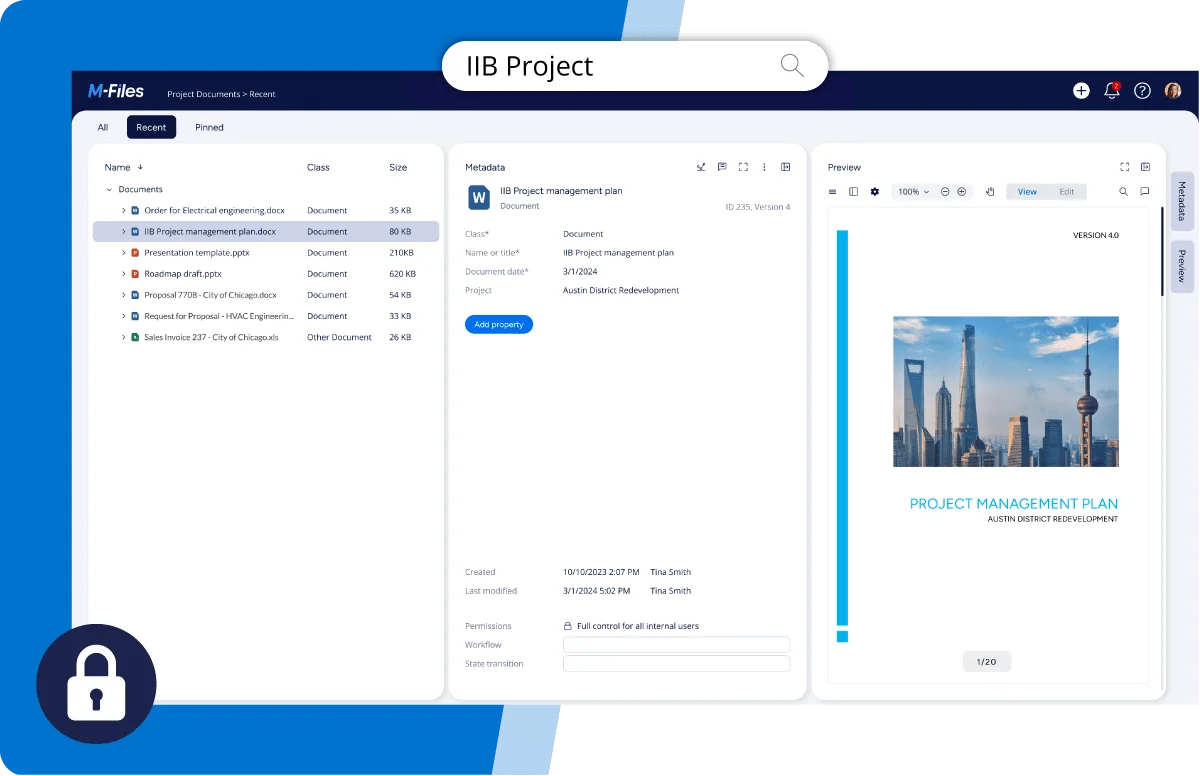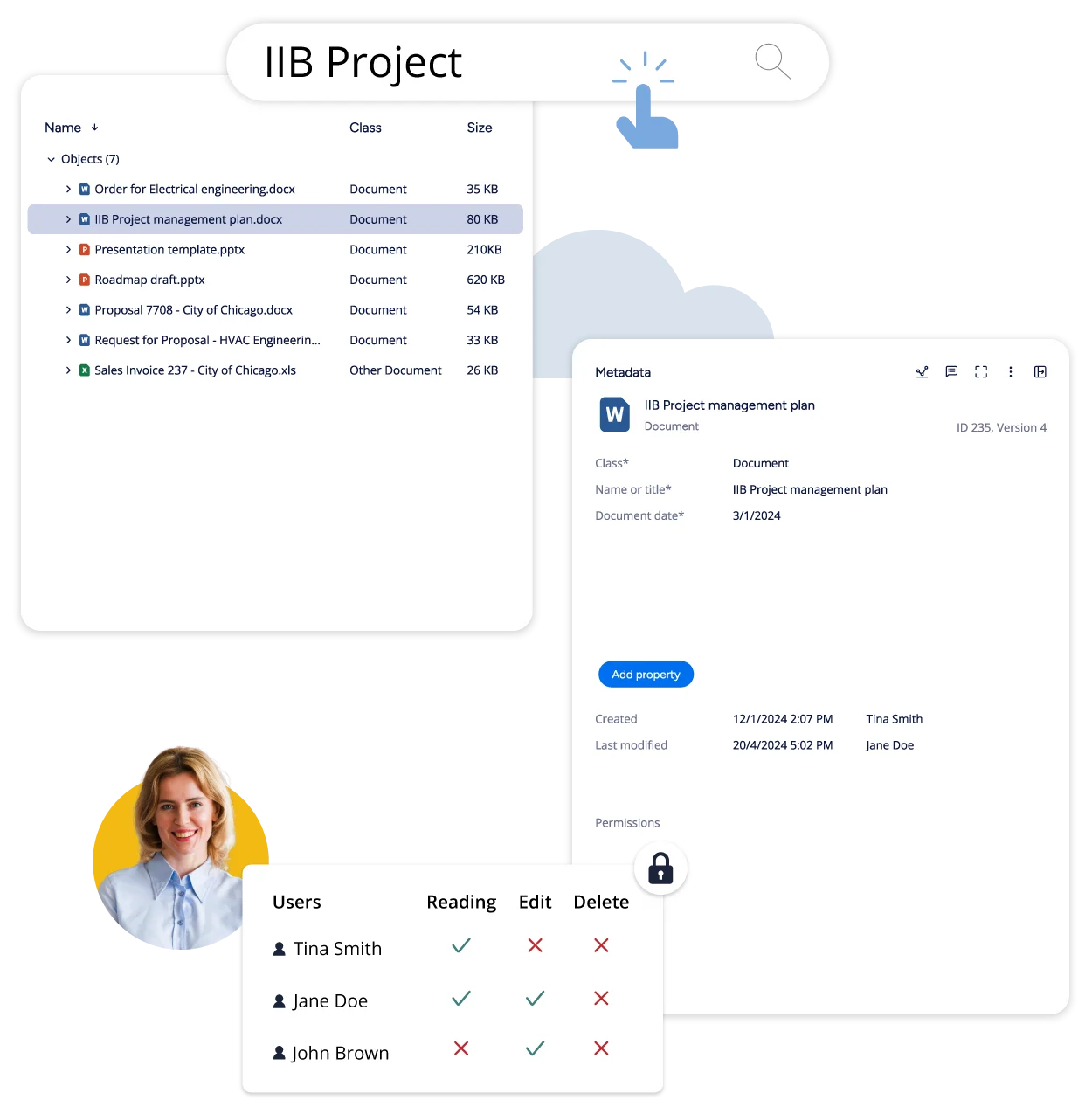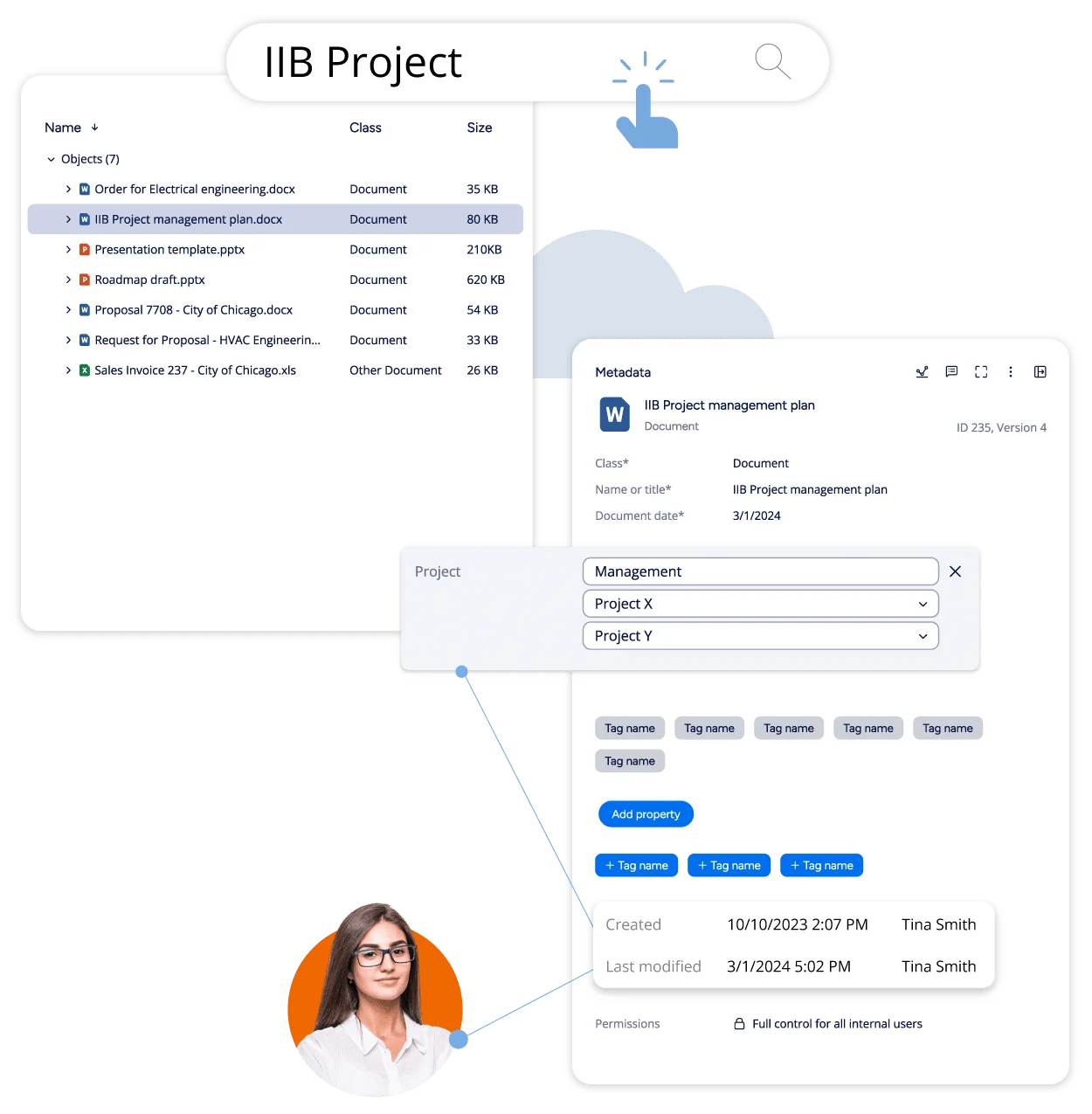ECM systems
ECM systems help tame information chaos
Businesses today are creating new data and documents at an ever-faster rate. While this information can help companies improve decision-making and seize opportunities, the immense volume of data produced daily can also create a kind of chaos. Simply organizing, storing and managing documents can become an overwhelming task, preventing companies and workers from using this information for business advantage.
An enterprise content management system (ECM system) can help. Using artificial intelligence to minimize the complexity of managing data, ECM systems help tame the chaos of information overload. ECM tools also help reduce business risk by ensuring the security of sensitive documents. And by automating document-intensive workflows, ECM systems enable content management to be a competitive advantage, rather than a drain on productivity.
For businesses seeking a superior enterprise content management solution, M-Files offers an intelligent information management platform that helps companies make smart connections across the business while automating business processes and keeping information secured and controlled.


ECM that truly connects your business
Connect all your enterprise content and support your business workflows with M-Files.
The Challenge of Managing Enterprise Content
To manage content effectively, ECM systems must provide solutions to several critical challenges.

M-Files: A Smarter Way to Manage Content
M-Files is a next-generation intelligent information management platform that improves business performance by making information easy to find and use. In contrast to traditional ECM software, M-Files doesn’t require a big migration project to move content and documents to a central repository. Instead, M-Files unifies systems, data and content throughout the organization without disturbing existing systems or processes.
Smart Connections via Metadata
Using artificial intelligence and machine learning, M-Files identifies and creates connections to documents in any system or repository, including network folders, filesharing services, CRM systems, SharePoint, and other platforms and applications. Using an Intelligent Metadata Layer, M-Files labels each document with information that allows workers to find it easily in seconds.
Automation to Keep Business Moving
M-Files also simplifies document-intensive workflows to minimize human error and streamline processes. With M-Files, documents move efficiently and automatically from one user to the next, guided by document metadata that is updated at each stage of the process.
Content That Is Secure and Controlled
M-Files secures documents with encryption and advanced permissions that ensure only the right people can access, open and edit a document.
A Full-Featured ECM System
M-Files helps organizations reduce business risk and ensure compliance.
Automating Workflows with M-Files’ ECM Systems
With ECM systems from M-Files, metadata helps to guide documents through workflows to enhance business process automation. The M-Files Workflow engine makes it easy to model document, project or process lifecycles on real-world workflows. M-Files can automatically assign tasks to individuals and follow up to make sure documents are processed correctly and on time. The metadata in each document in a workflow gets automatically updated as it moves from person to person or stage to stage.
Electronic signing capabilities in M-Files help to accelerate workflows. Documents can be signed from anywhere, on any device, in a secure and auditable way. Once signed, documents are immediately stored according to company policy, and any contractual stipulations can be assigned to an automated workflow.

How M-Files Enables Efficiency for Your Business
Faster Search
What you need, when you need it. That is the way M-Files works. Fast, easy, and intuitive.
Familiarity
You can use your favorite daily tools, such as MS Teams or Salesforce to manage your documents.
Easy Collaboration
Share content securely, and co-author documents simultaneously — wherever you work.
Streamlined Daily Work
Let M-Files suggest tags for your documents and add workflows for faster processing.

Why Customers Prefer M-Files
M-Files increases the productivity of knowledge workers by making information easier to find, access and share. By helping companies make smart connections and automate critical business processes, M-Files ensures a seamless digital experience, strengthens collaboration, promotes business continuity and reduces business risk.
M-Files can be deployed in the cloud, on premises or as a hybrid solution that optimizes cloud-based collaboration with investments in on-premises architecture. Integrations with line-of-business solutions, other archives, and legacy ECM systems make it easy to use M-Files with an existing technology stack. Workers can even use their favorite daily tools such as Microsoft Teams or Salesforce to access and manage information via M-Files. And a highly configurable platform with third-party add-ins makes it easy to customize M-Files to support any use case or business requirement.
Today, thousands of organizations in more than 100 countries around the globe rely on M-Files to manage business information and processes while giving their employees a smarter way to work.





